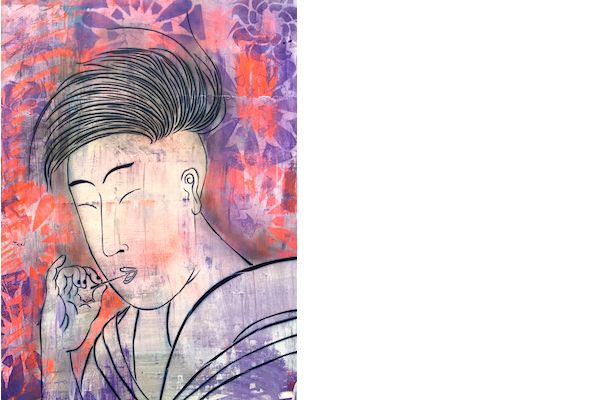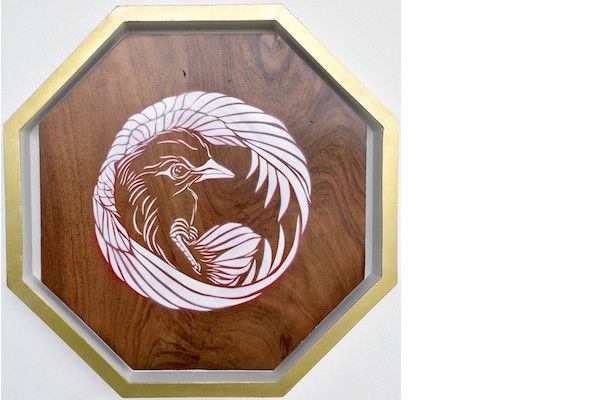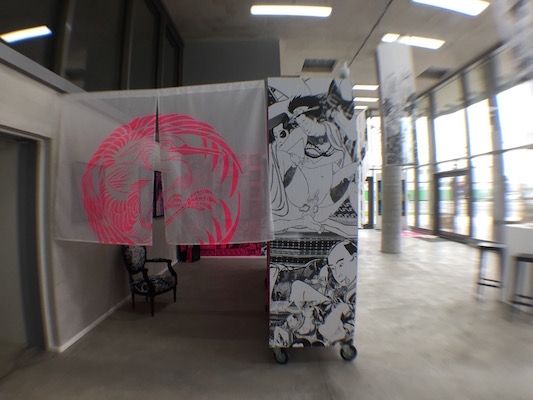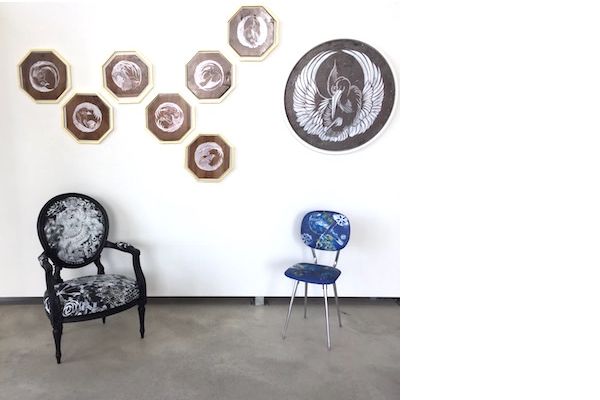Stewrotica – Ode to Japan
The relationship between Stew and GCA Gallery is almost 4 years old.
Following the success of the Homework exhibition in Nice, at the end of 2015, Stewrotica was very soon considered between the two partners.
With Stewrotica, we find the whole identity of Stew and his passion for classical Japanese culture combined with the personality of GCA Gallery.
This exhibition was conceived as a team effort. Since its conception at the thematic level up to the scenography, the duo Stew / GCA has used their different skills to present the latest creations of the artist.
Stew, in his mastery of stencilling, in choosing his subjects or angles of view, proves once again that he is one of the best street-artists and stencil artists of his generation.
He knows not only how to create highly successful works of art but also monumental murals.
He has painted throughout the world for several years now, which has allowed him to leave his traces in Portugal, Russia, Italy, Tunisia or obviously in Paris with one of the highest murals in France.
Thus, on a recent mural in Lisbon, Stew reveals a sparrow on a branch with in the background, a purple sun. The out-centred composition, the use of repetitive and interwoven motifs as a material, the limited range of colors evoke the rising sun and the cuckoo (hototogisu) which announces the arrival of the summer but which is also the symbol of a Love dissatisfied. Hiroshige (1797-1858) uses this symbol regularly in several of his works. Here we have a much more modern and monumental treatment of the subject which, adapting to our times and techniques, pays tribute to the Japanese artist of the nineteenth century
Similarly, on another mural made this year in Nanterre, Stew deploys an enormous carp on a blue background, surrounded by geminated carps. In Japanese culture carp has several meanings: it is a symbol of love and virility but also of perseverance and tenacity. The geminated carps on the flanks of the main subject remind us of a Buddhist symbol of prosperity and happiness.
His chromatic ranges take us on confusing paths while respecting the aesthetic aspect so present in the work of Stew.
The mixture of straight lines and stencils unifies his monumental pieces like his works on canvas. Using his stencils as stamps, Stew creates patterns that sometimes serve as a background, sometimes as material for a given element.
His subjects, chosen precisely in accordance with the painted supports, are not at all anecdotal and refer, for the most part, to icons of Japanese classical culture and artistic creation.
Bambi and the rainbow, offers us a deer, symbol of longevity, treated in a Stew-like manner. The colors are contrasted, the shade of the sky pronounced, using patterns with positive and negative stamps. The red heron, a type of blazon made of stencil on a round concrete support, with its purified lines, is based on the môn (Japanese coat of arms) which is an aristocratic symbol. This heron refers to a certain nobility.
Stewrotica focuses on the erotic side of classical Japanese culture. The artist has repeatedly treated erotic subjects, but here we have a wider and more complete range.
With Dildo girl, the importance of the Shunga, Japanese erotic engravings, whose golden age is in the Edo period (1603 -1868) takes on its full meaning here. The naked girl holds in her right hand a harigata (sexual object) probably made of ivory.
In the same series, Teeth Pain, represents in fact the portrait of a courtesan of the district of pleasures of Edo (Tokyo), Yoshiwara. She makes her toilet and her naked neck is a specific erotic element that is frequently found in different series of prints of Utamaro (1753-1806)
Two fingers, a very explicit image, refers to the erotic work of Hokusai (1760-1849), even though “officially” Hokusai did not realize Shunga insofar as these books, ancestors of modern mangas, were never signed and were even banned …
Another reference to Hokusai in Stew’s work is seen in his cyclops demon, a strange creature with a dragon body. In the prints from the Hayaku monogatari series (1831-32), Hokusai features fantastic characters, with expressive behaviors and non-academic compositions. The fantastic literature, in general terms, in Japan, was truly appreciated during the end of the Edo period.
Stewrotica is an invitation to travel in time and space. The works presented here, both full of classical optimism and reference, summarize the work and research of Stew of recent years. Subjects are treated with seriousness and thoroughness




































